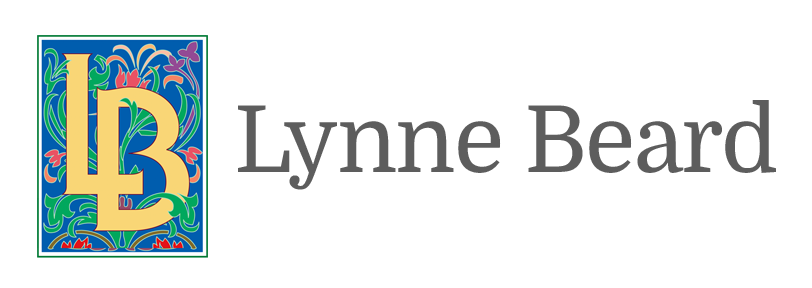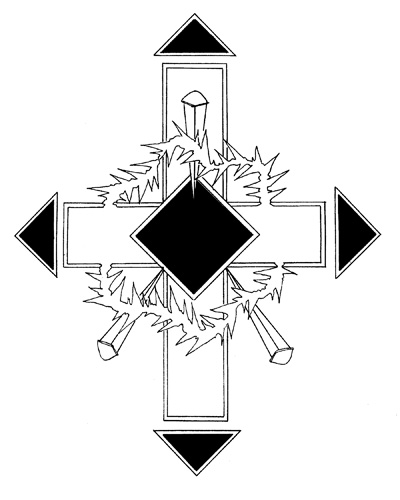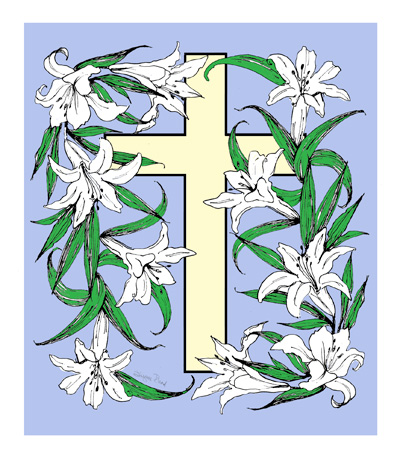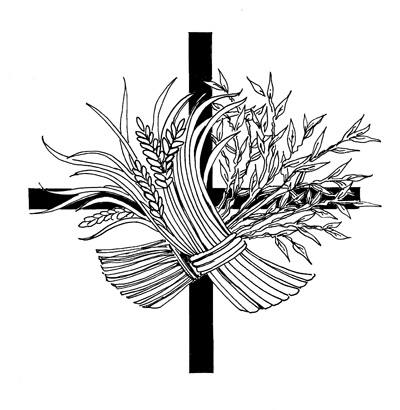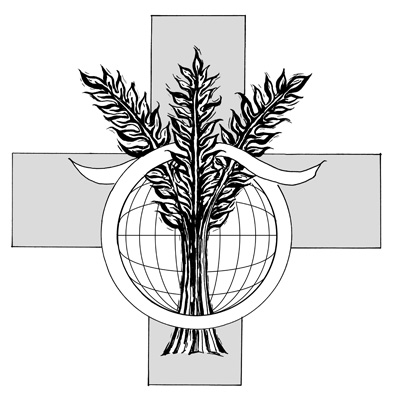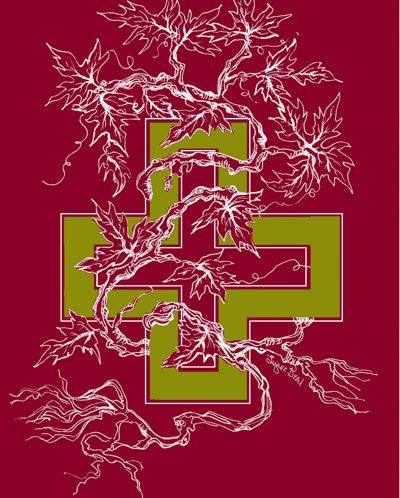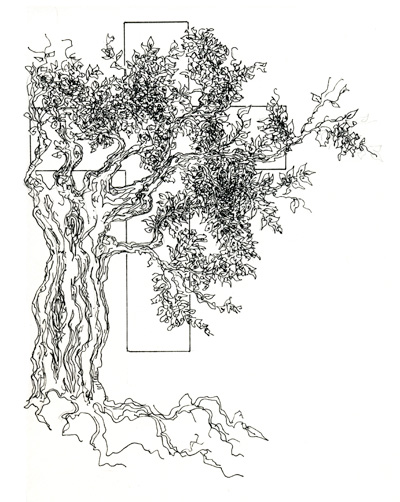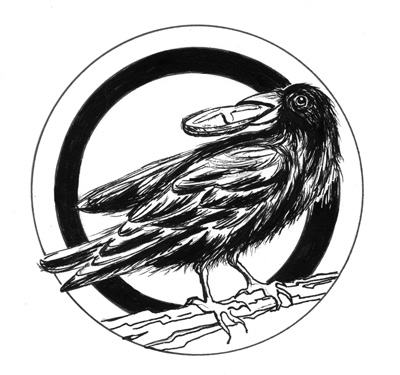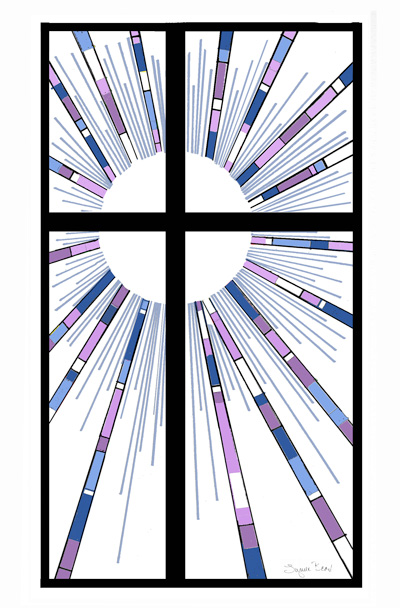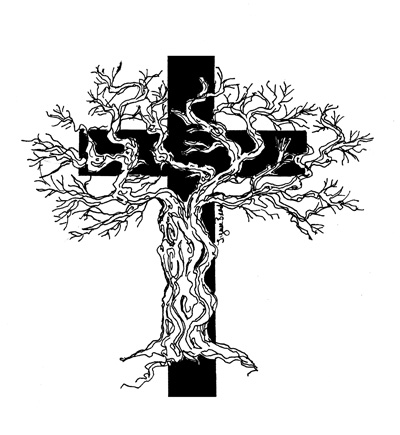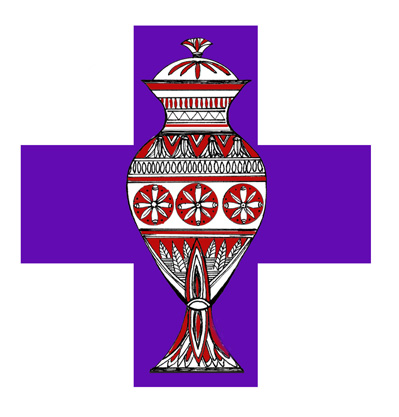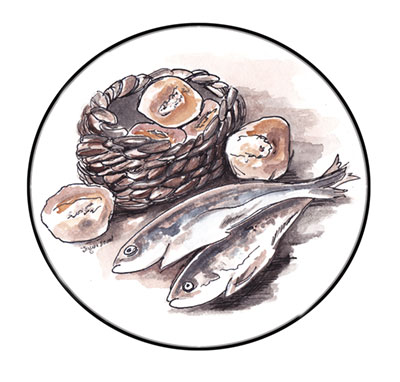July 2, 2012
Passion Cross – The Passion Cross, which is also called the Cross Aiguisee and the Cross Urdee, has its ends cut to points, which stand free of the cross. Because it represents the suffering of Our Lord, it is also known as the Cross of Suffering. In this design it is combined with the crown of thorns, which was a parody upon the Roman Emperor’s crown of roses. Three nails and the monogram of Christ are included and all of these are symbols of the Passion.
July 1, 2012
Easter Cross – Because it blooms at Eastertide, the familiar Easter Lily is a common and extremely popular symbol of Our Lord’s Resurrection. It also represents purity, innocence, rebirth and hope- the spiritual essence of Easter. Tradition has it that lilies were seen growing in the Garden of Gethsemane after Christ’s agony. The lily has the shape of a trumpet and depicts the announcement of the birth (and hence the death and resurrection) of Jesus Christ. Because they are white, lilies signify the pure new life which is the promise of the Resurrection. The cross combined with lilies is known
July 1, 2012
Wheat and Tares – This design is based on Matthew 13:24-30 and 36-43 in which Jesus tells the parable of the wheat and tares sown together. Exegesis has strongly influenced the plant chosen for tares in the bible. Tares is taken from the Arabic word zawan which is widely accepted to mean noxious weed. Having both wheat and weeds within us, we acknowledge that we should place our hope in God’s promise and receive grace and strength from the Lord’s table so that we may show justice and mercy in the world.
July 1, 2012
World Communion Sunday – Wheat is an ancient symbol that is used to represent Holy Communion and it is combined with the never-ending circle of unity and the globe of the earth. These are depicted with the cross to remind us that on World Communion Sunday, Christians around the world are gathered together to receive the Eucharist as one united body in Christ.
July 1, 2012
Vine And Branches – The vine and vine leaves are ancient symbols of peace and plenty widely used in both the Old and New Testaments to denote the relationship between God and His people. The vineyard was the sheltered site where the Keeper of the Vineyard (God) tended His vines (the children of God) (Is 5:7). As an emblem of Christ, it is the “true vine” (Jn 15:1, 5, 8). Vine and vine leaves referred to the Christian church and God as the Keeper of the Vineyard and are also symbols of the Eucharist. This reminds us that all are
July 1, 2012
Tree of Life – The tree has played an important part in Christian symbolism and about thirty trees are mentioned in the Bible. In Christian art they are sometimes depicted in a decorative style and represent the cycle of life, death, and resurrection in the fullness of the four seasons. As one of the “fruits of the earth”, trees contained the seeds for each new and successive generation. From its roots to its leafy branches, the tree signified a link between heaven and earth. Trees are often represented in catacomb paintings, but they are symbolic rather than recognizable images of
July 1, 2012
St. Benedict – Benedict of Nursia, Abbot of Monte Casino, is known as the Father of Western monasticism. His rule for monasteries was moderate and encouraged a generous spirit of hospitality in that visitors to Benedictine communities are to be welcomed as Christ himself. In iconography, Benedict is often seen with a raven, which is one of the symbols associated with him. From the Dialogues of Gregory the Great comes this legend: At dinner time, a raven came daily to receive some bread from Benedict. One day, Benedict received a poisoned loaf of bread from an envious priest. Benedict gave
July 1, 2012
John the Baptist – One of the symbols of St. John the Baptist is the lamb. During the Renaissance the lamb was often used in depictions of the Holy Family with St. John as an infant. In this case the lamb represents St. John’s role as the forerunner of Christ and his recognition of Him as the Lamb of God who would come to earth to save humanity. The lamb standing on a book alludes to John’s teachings which foretold the coming of Christ and the shell on the banner represents John baptizing Jesus.
July 1, 2012
Transfiguration – The Transfiguration of Our Lord, as was told in Matthew 17: 1-8, Mark 9: 2-8 and Luke 9: 28-36, tells of the time when Jesus took Peter, James and John up to a high mountain to pray with him. As he was praying, Jesus was transfigured into a glorious form which, reflected a dazzling light. This design depicts these bright and shining rays of light centered around the cross, a sign of Jesus Christ.
July 1, 2012
Gnarled Olive Tree – This design reminds us that Jesus joins the church in the wilderness for forty days as we begin our Lenten journey. The tree interwoven into the cross also represents the wood of the tree which becomes the cross of Christ. The symbolism is poignantly expressed in the words of this poem: Three crosses now on death’s hill stood, Three trees killed for a killing’s sake, To kill a woodworker with his wood, Stained now with a carpenter’s blood.
July 1, 2012
Mary Magdalene – Bernard of Clairvaux called Mary Magdalene “ the apostle to the apostles” because she delivered the good news to them from Christ’s empty tomb. She is remembered by the church on July 22 and one of her most well-known symbols is the covered vessel which carried the precious ointment used for anointing. She brought this ointment to Christ’s tomb after the Crucifixion and so she is also known as the “anointer” and the “perfume bearer”. In Christian art this vessel is often depicted as an elaborately designed covered, vase-like jar and the oil or ointment referred to
July 1, 2012
Loaves and Fishes – In the gospel reading from John 6, Jesus feeds thousands of people with five loaves and two fish. Looking closely at this miracle, we can see how we can always rely on God’s abundance. With our faith in God’s care, we can be certain that He will take care of our needs and use this as an example of how, in our daily lives, He works through us to care for others in need.
Loading new posts...
No more posts
